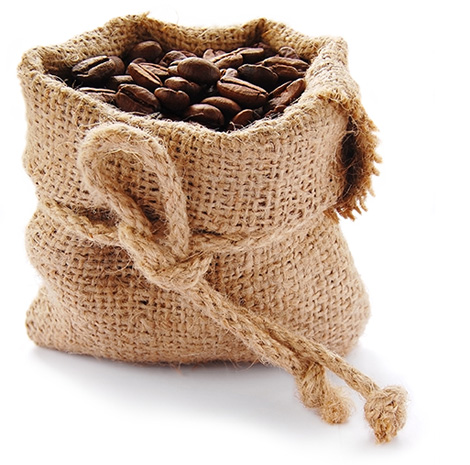A Journey Through Time: The History of Coffee
Few things evoke as much passion, community, and culture as coffee. It’s the drink that fuels our mornings, connects us with friends, and has become an integral part of daily life for millions globally. But how much do we really know about the origins of coffee—the stories behind this rich and aromatic beverage we so often take for granted?
If you’re a coffee lover, a history enthusiast, or someone who simply enjoys learning about the roots of everyday delights, you’re in for a treat. In this post, we’ll explore the fascinating history of coffee, from its mythical beginnings, through its spread as a global commodity, to its flourishing in coffee shops and plantations around the world.
Grab your favourite brew, settle in, and immerse yourself in the captivating history of coffee.
The Birth of Coffee: Legend and Origin
The story of coffee begins in the highlands of Ethiopia, where legend has it a young goat herder named Kaldi made an astonishing discovery. It is said that Kaldi noticed his goats were unusually energetic after eating the bright red cherries from a certain bush. Curious, Kaldi tried the cherries himself and was filled with a similar sense of vitality.
Word of this magical plant spread, eventually reaching local monks who used its invigorating effects to stay awake during long hours of prayer. Thus, the origin of coffee—as both a social and spiritual tool—began.
While Kaldi’s story is often recounted as a myth, Ethiopia remains widely accepted as coffee’s birthplace. Its forests are home to wild Arabica coffee, the species from which most of the world’s coffee originates.
Coffee’s Journey Beyond Ethiopia
By the 15th century, coffee had travelled across the Red Sea to Yemen, where it found its place in the Sufi monasteries. Here, it became integral to religious ceremonies, helping mystics sustain their focus during long vigils.
It was in Yemen that coffee, or “qahwa” as it was called in Arabic, underwent its transformation into a brewed beverage. The process of cultivating, roasting, and brewing coffee truly began to take shape in this region.
From Yemen, coffee’s popularity spread through the Arab world. The bustling city of Mecca became the first hub of coffee culture, with public coffeehouses serving as venues for intellectual discussions, music performances, and community gatherings. These early coffeehouses, known as “qahveh khaneh,” laid the foundation for the social aspect of coffee that remains a hallmark of its culture today.
By the 16th century, coffee had reached Turkey, Persia, and Egypt, with Ottoman Turks refining both the brewing method and the tradition of serving coffee. Coffee became an emblem of hospitality in these regions, often shared during ceremonies, negotiations, and social visits.
The First Coffeehouses of Europe
Europe’s relationship with coffee began in the 17th century when Venetian merchants brought the exotic beans to the continent. Initially met with scepticism, coffee was eventually embraced as an “intellectual drink” that fuelled conversation and debate. Coffeehouses began sprouting up in major cities like Venice, London, and Paris, where they quickly earned the nickname “penny universities.”
Why this nickname? For the price of a penny, anyone could enter a coffeehouse, sip on a cup of coffee, and engage in—or simply listen to—intellectual discussions on politics, arts, and science. Coffeehouses became the breeding ground for revolutionary ideas, serving as meeting places for figures of the Enlightenment and beyond.
Perhaps most famously, Lloyd’s Coffee House in London evolved into Lloyd’s of London, one of the world’s most renowned insurance markets.
The First Coffee Plantations
The widespread cultivation of coffee took root in the 18th century. While Yemen attempted to guard its hold on coffee’s production, smuggling and trade eventually introduced the plant to other countries.
One of the most significant events in coffee history occurred when the Dutch brought coffee plants to their colonies in Southeast Asia, establishing the first coffee plantations on the island of Java (what is now Indonesia). The climate proved perfect, and Java soon became synonymous with high-quality coffee beans.
From there, coffee spread farther afield. The French introduced it to the Caribbean, the Spanish to Central America and South America, and the Portuguese to Brazil. By the 19th century, Brazil had become the largest coffee producer—a title it still holds today.
The rise of coffee plantations had profound cultural and economic impacts but also came with a darker side. The use of enslaved people in coffee cultivation—a reality that persisted well into the 19th century—casts a shadow on this period of coffee’s history. Today, the coffee industry continues to grapple with questions of ethics, sustainability, and fair trade.
The Global Coffee Culture
Fast forward to the 20th century, and coffee was no longer just a beverage; it was a global phenomenon. Instant coffee and the rise of multinational coffee chains like Starbucks turned coffee into an everyday staple for people across the globe.
Meanwhile, specialty coffee movements emerged, celebrating the artistry behind every cup—from the selection of beans to the precision of brewing methods. This led to the rise of third-wave coffee culture, which emphasises single-origin beans, detailed tasting notes, and a focus on sustainability.
Today, coffee is grown in over 70 countries, produced by millions of farmers, and enjoyed by billions of people daily. It’s an integral part of rituals, whether it’s grabbing a latte on your morning commute or savouring a pour-over brew on a Sunday afternoon.
Why Knowing Coffee’s History Matters
Understanding the history of coffee adds a deeper layer of appreciation to your daily cup. Coffee is more than just a beverage—it’s a global connector, a spark for creativity, and a symbol of community.
Knowing the stories behind coffee also helps us think critically about its future, from supporting ethical farming practices to fostering sustainable production methods. By honouring the past, we can pave a better path forward for coffee enthusiasts and producers alike.
Create Your Coffee Story
Now that you’ve had a taste of coffee’s storied past, why not make your own history? Explore unique beans, experiment with brewing methods, or connect with fellow coffee lovers to share your passion.
To take your coffee knowledge to the next level, subscribe to our newsletter for more stories, brewing tips, and insider access to exclusive bean selections.
Your perfect cup starts here with Gold and Black Coffee

